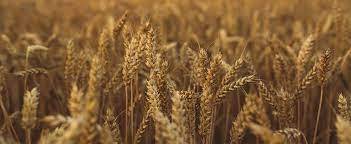
In the past, the agricultural sector of Pakistan was the backbone of Pakistan's economy as it made up more than 53% of the GDP and 66% of the labor force was part of this sector. However, now this sector fails to contribute to the socio-economic development of Pakistan and calls for serious reforms.
A few months back the government of Pakistan introduced "Green Revolution 2.0" for the revival of this sector, but numerous other steps are necessary for sustainable growth of the agricultural sector.
First of all, lack of coordination between different sectors and ministries both at the federal and provincial levels leads to policy misalignment. After the 18th amendment, different ministries and portfolios like food security, climate change and agricultural research lay in the federal subject while livestock, irrigation and agriculture went to the provinces.
For the development of the agricultural sector, the Ministry of Agriculture is not solely responsible but other ministers and departments like climate change, irrigation, and livestock also play vital critical roles. The information asymmetric and lack of coordination between various ministers and organizations should be addressed on emergency basics.
Research and Development is a necessary element for the development of any sector. With the help of research, the world has shifted to high-yield and profitable agricultural techniques. In our country, unfortunately research is always ignored. Currently, only 5% of the budget is allocated for research and development of the agricultural sector.
In addition to research and development, adoption of the latest technology is another important element. With the help of technology issues and problems can address instantly. In Pakistan, the agriculture advisory service still works in traditional ways. Digitization of agriculture advisory services will help farmers solve their problems with a single click and the onus for that lies on the State.
The agriculture sector consists of crops, livestock, forests, and fishery. In Pakistan, in both formal and informal discussions only crops are considered as agriculture. In the case of crops, we need to revise our crop cultivation pattern, and diversification of crop pattern need to be considered. If we look at our current crop cultivation pattern we can observe we are cropping only four crops; wheat, sugarcane, cotton, and rice. These crops are water-intensive crops.
According to the Pakistan Institute of Development Economics, about 80% of agricultural water is used in the cultivation of these four crops and their contribution to GDP is only 5%. Research and development can solve such issues as that can show us how to change the system to where high-yield seeds are used as a means of generating a higher yield of a crop.
For the development of livestock, we need to design special peri-urban areas having proper facilities for breeding, nutrition, quality water, and disease prevention vaccines available easily. With the help of such measures beef production, and milk production will increase and can also contribute to economic growth.
It is estimated that the fisheries sector of Pakistan has produced more than $650M worth of fish, but this sector is facing numerous challenges to evolve as a major export sector of Pakistan. One of the main challenges is over-fishing as nine out of fourteen species have been extinct. For the development of this sector, a policy is needed which centralized around ecological degradation, climate changes, and over-fishing. People can construct small and medium-sized fish firms but due to financial constraints people they can construct large size firms. Public-private partnerships can be a good option for this issue.
In Pakistan, different credit mechanisms have designed for the financial help of framers. There are two types of agricultural credit systems; on-farm and off-farm. Recently it was noticed more than 46% of off-farm credit goes to three major urban cities of Pakistan; Karachi, Lahore and Islamabad. Both on-farm and off-farm credit mechanisms should follow credit mechanisms with strong accountability.
Trans-border smuggling of both agricultural inputs such as fertilizer and outputs in the form of sugar and wheat are also barriers to the growth and development of the agricultural sector. A proper and effective trans-border management system with well-equipped devices needs to be considered for sustainable growth of the agricultural sector.
The agricultural sector of Pakistan has full potential for the socio-economic growth of Pakistan. The various issues and barriers faced by this sector should be addressed as soon as possible. Instead of the top-down approach, a bottom-up approach needs to be considered because farmers have a better understanding of their issues and challenges and can devise better solutions to their problems.

